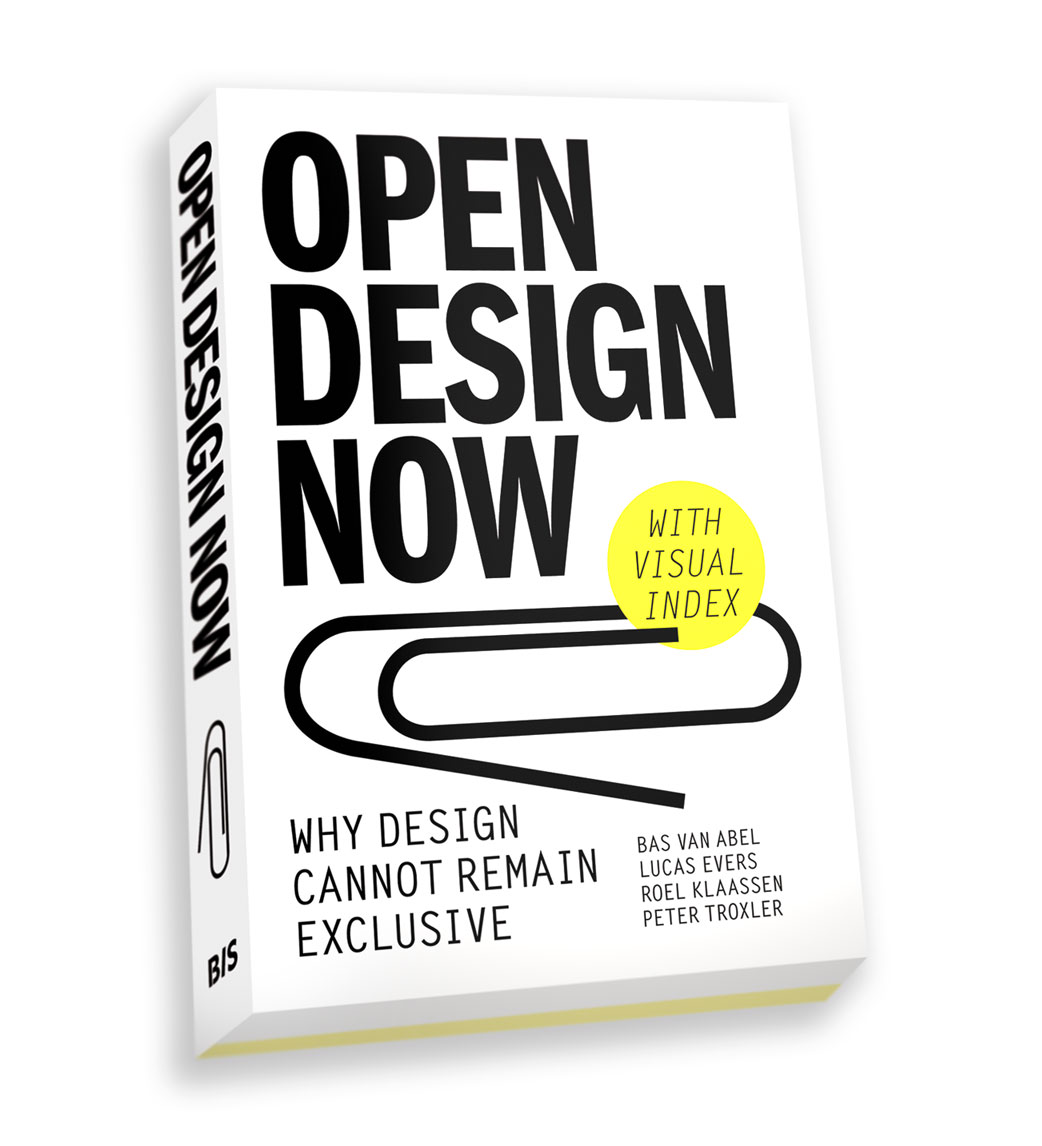Headline Archive
19 Oct 2011
Libraries of the Peer Production Era

Mapping the landscape of commons-based peer production, I analyse the arena of open source hardware and look into various initiatives being spawned by fabrication labs, trying to identify their business potential and asking how these initiatives contribute to giving people more control over their productivity in self-directed, community-oriented ways. Now also available online at opendesignnow.org
10 Feb 2011
100 People, 24 Hours, 17 Projects and Tons of CO2 Reduction
In 2008 I had the chance to design and run a 24-hour creative marathon for ETH Zurich (for details and credits see here). The over 100 participants generated 17 project proposals how to reduce CO2 emissions and energy consumption at this university. Not only was this great fun to do; Patricia Wolf and Ralf Hansmann,
09 Oct 2010
Fab Labs and their Business Models
The paper “Commons-Based Peer-Production of Physical Goods—Is There Room for a Hybrid Innovation Ecology?” is the last publication this year on the subject of Fab Labs and their business models. It includes in total three studies: the final results from the Fab Lab survey that I did together with the University of Applied Sciences and
08 Sep 2010
Bending the Rules: The Fab Lab Innovation Ecology
To be successful, e.g. in business, it’s often needed to go beyond what’s typically believed to be the normal way of doing things, to be creative when applying rules. This is not different for making Fab Labs a success. In a recent paper, I explore two sets of rules: intellectual property protection and common fab
06 Aug 2010
Sponsoring FAB6 *
There is a new digital revolution going on, the revolution of personal digital fabrication. Happening in Fab Labs all over the world it has exciting consequences for art, business, industry, culture and education. These implications might, some speculate, equal the implications of the industrial revolution of the late 18th and early 19th century. Easy access
21 Jun 2010
Sustainable Business Models with Open Content
Content can be reproduced at a price of nearly zero. Bits are just so easy to copy over the Internet. The book Open Content Business is focusing on this challenge. And while under constant development, it builds on an article I wrote in 2009 which can be downloaded in full (pdf, 479k) from SSRN. [scribd
21 Jun 2010
What’s Next For Living Labs
Living Labs have become a permanent feature of the European research and innovation landscape in the last decade. Centered around co-creation, exploration, experimentation and evaluation they are a user-centric approach to develop and prototype complex solutions to emerging challenges. This all happens in a real life context. Their success relies heavily on user co-creation. The
06 Feb 2010
‘To RIAA or Not to RIAA, That was the Question’, Authors’ Guild
‘To RIAA or Not to RIAA, That was the Question’, according to this blogpost by the Authors’ Guild. Not to was their answer. I’m happy to read that. It is very sensible. And the reasons behind it are equally sensible. ‘One could fill a good-sized law-school classroom with copyright professors who believe that Google’s scanning
16 Jan 2010
Making Money With Free
‘How to make money with free?’ asks Gerd Leonhard, and goes on to recommend open licensing as a basis for a new content business: ‘The greatest thing that happened with the raise of Creative Commmons is that we’ve taken this idea that has been around pretty much for ever which basically says “I’m giving something
16 Jan 2010
Challenges in the 21st Century
The turn of the 21st century has seen a shift in public interest from knowledge to creativity and a growing focus on creative industries from an economic and wider social perspective (see e.g. Scott 1999, DCMS 2001, Florida 2002, Steenhoven, Stikker et al. 2005). Creative industries typically include advertising, architecture, art and antiques markets, crafts,
- 1
- 2